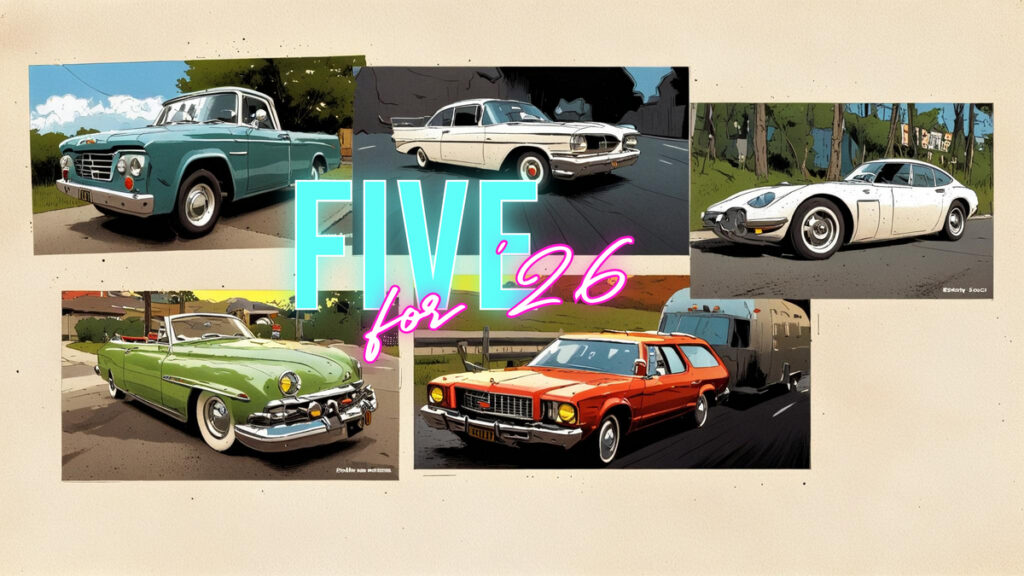You can see a classic Camaro, Challenger or Mustang at virtually every car show in North America because those cars have armies of fans.
Popularity keeps those cars on the road—aided by a large network of parts suppliers and committed restorers.
I’d like to see some less popular cars at shows in 2026 for a change—here are five examples.
Jerry Sutherland
The first example is the 1975 Plymouth Fury Sport Suburban station wagon. These were large cars—even by mid-70s standards, because they were based on the massive C-body platform.
In other words, you could haul the whole Brady Bunch family and their buddies in this giant wagon. There was a 440 option in ’75, so this long roof could easily keep up with smog era traffic. I liked these Fury wagons because they represented the last days of an era when a big wagon made sense.
The second example is the 1950 Lincoln Cosmopolitan convertible. You won’t see one of these Lincolns at 9999 out of 10,000 shows because they are incredibly rare.
Ford didn’t build many Cosmopolitan convertibles from 1949-51 and 1950 was the lowest production year. They came with a 337 cubic inch flathead V-8 and a GM Hydra-Matic transmission. I like many things about these cars—from the new look bathtub body lines to the factory frenched headlights. It was a custom car right from the factory.
The third example is the 1959 Catalina two-door sedan with the 3-deuce (tri-carb) 389 big block under the hood. There are many things that sell this car to me.
This is a 1950s version of the ’68 Plymouth Road Runner, because it’s a stripped-down 2-door post car with a big block under the hood. The 389 pumped out 345 horsepower with the tri-carb setup…10 more than the legendary Road Runner. That’s why a two-door post ‘59 Poncho 389 would be welcome at any car show on the planet.
The fourth example is the 1964 Dodge D-100 pickup with the 426 big block wedge option. This truck appeals to me because it makes no sense.
Trucks were built to be workhorses back in ’64—not track stars. Most pickups spent their lives working on farms and construction site…and most of them were stripped-down, with manual transmissions and a base six-cylinder engine. A D-100 with a 426 wedge under the hood is truly a car show unicorn—in other words, you’ll never see one at any event.
The last example is from Japan—it’s the 1968 Toyota 2000 GT. I’m trying to learn more about the history of Japanese cars because they’re becoming a force at most car shows.
The 2000 GT was a hi-tech, mid-engine, rear-drive, halo car built to catapult Toyota into the sports car market. The strategy worked because this little car dominated speed and endurance runs on the track. The 2000 GT is now a true million-dollar car now because it’s rare and a big part of Japanese automotive history. That price tag explains why you probably won’t spot one at a car show.
I’m not ruling out seeing one of these five classics at a car show in 2026—but I wouldn’t take those odds to Vegas.
Jerry Sutherland
By: Jerry Sutherland
Jerry Sutherland is a veteran automotive writer with a primary focus on the collector car hobby. His work has been published in many outlets and publications, including the National Post, Calgary Herald, Edmonton Journal, Ottawa Citizen, Montreal Gazette, Saskatoon StarPhoenix, Regina Leader-Post, Vancouver Sun and The Truth About Cars. He is also a regular contributor to Auto Roundup Publications.
- CLICK HERE TO SIGN UP FOR THE NEWSLETTER
- CLICK HERE to Like us on Facebook
- CLICK HERE to Follow us on Twitter
- CLICK HERE to Follow us on Pinterest
